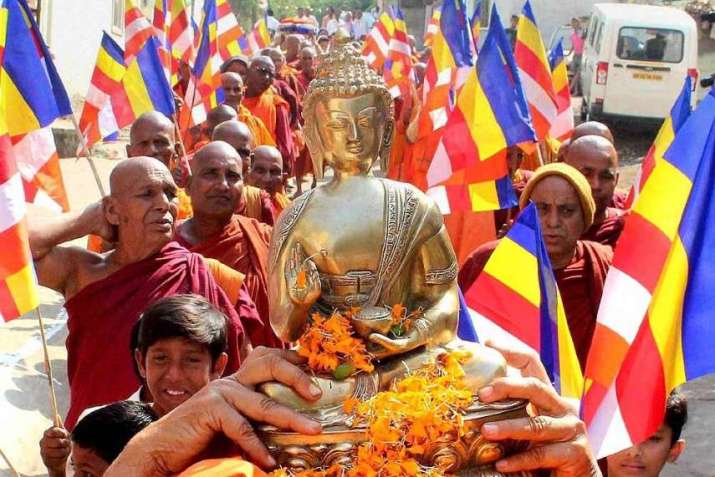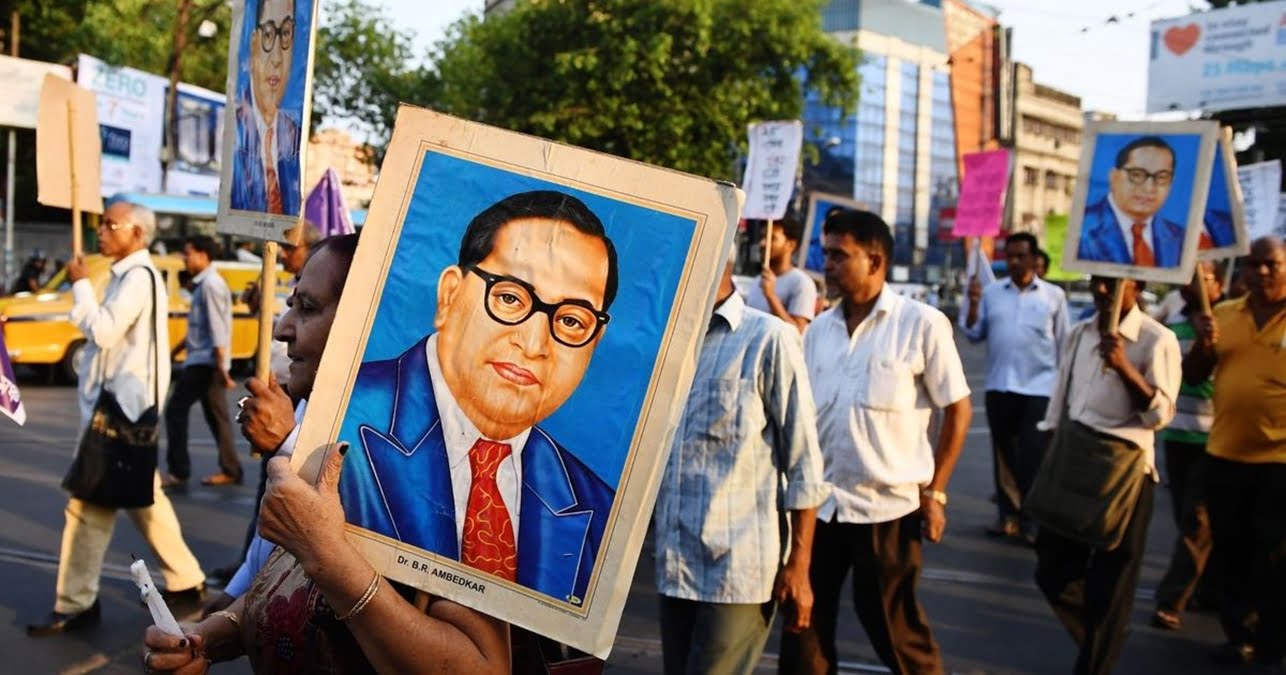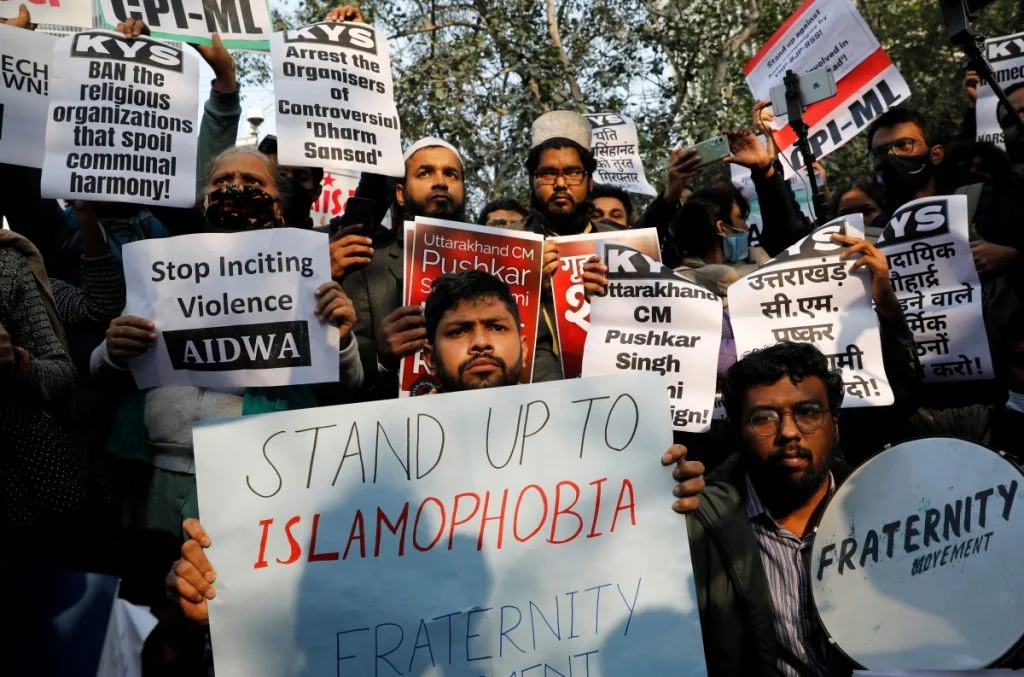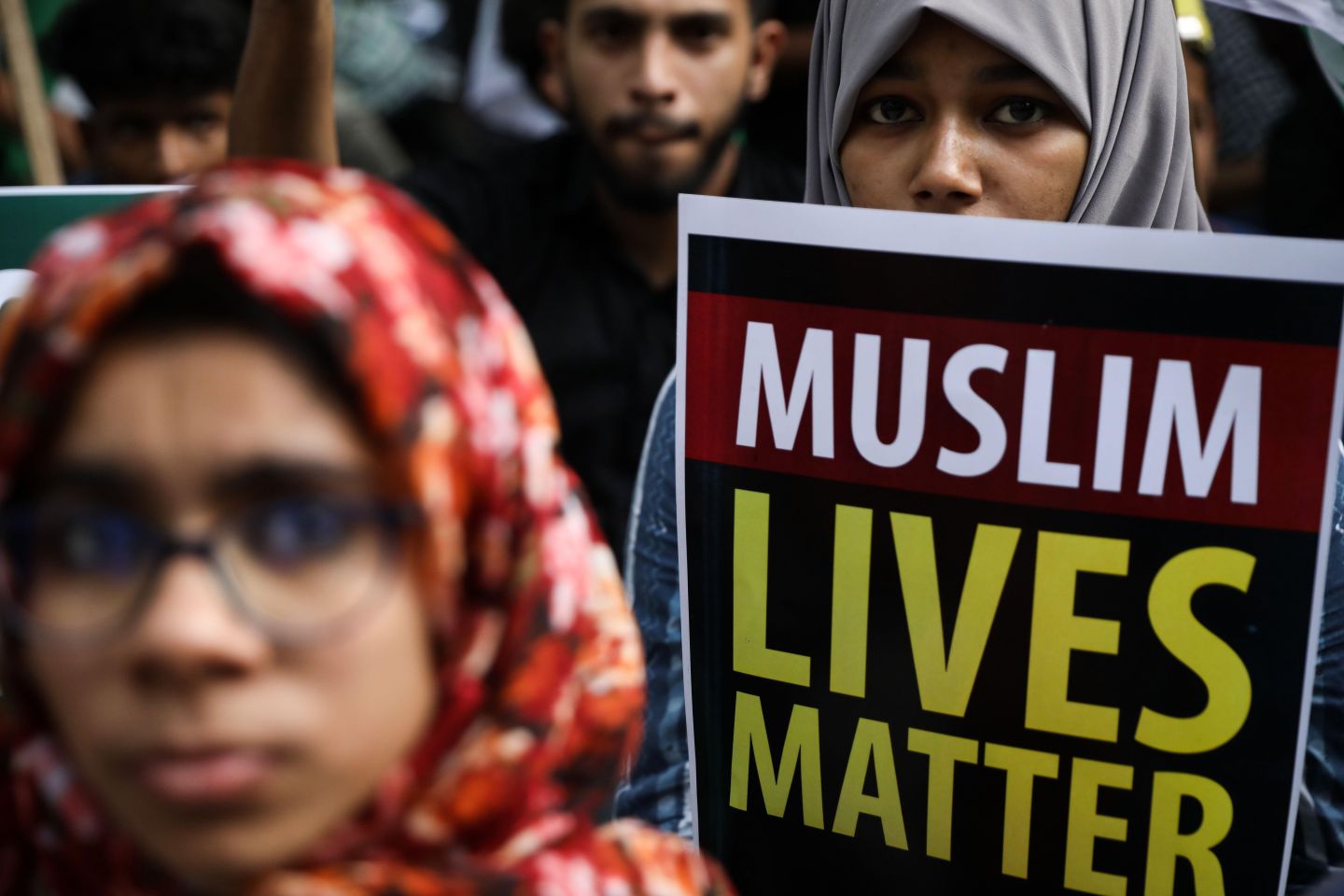Recently, 236 Valmikis embraced Buddhism in Karera village outraged by the state’s mishandling and treatment of Hathras rape case. This event took place on October 14, a significant day as 64 years ago, Dr. Bhimrao Ambedkar converted to Buddhism along with his 3,65,000 followers, initiating the Dalit Buddhist or Neo Buddhist movement in the country on this day. Following his footsteps, Dalits have historically sought religious conversion as a method to exercise their agency by rejecting Hinduism and its discriminating ideals and traditions in hopes of leading a life of dignity and integrity. Whether or not these hopes have been fulfilled is a question that demands deeper thought.
Following Dr Bhimrao Ambedkar’s footsteps, Dalits have historically sought religious conversion as a method to exercise their agency by rejecting Hinduism and its discriminating ideals and traditions in hopes of leading a life of dignity and integrity. Whether or not these hopes have been fulfilled is a question that demands deeper thought.
Dalit-Buddhist or Neo Buddhist Movement: The Initiation
Dalits have found themselves shackled by the hierarchical stratification of caste dictated by Hinduism for centuries, a system that has placed them at the bottom of the social order and denying them a life of dignity and integrity. It was Dr. Bhimrao Ambedkar, whose portrait can be found in any Dalit household, who changed the course of Dalit history and dedicated his life to the emancipation of his community. Born into a low Mahar caste, Ambedkar suffered his share of humiliation and indignation since childhood, but further more painful was the realisation that even his superior education and accolades didn’t free him from the insidious burden of his caste and everything that came along with it.
The radical decision of religious conversion and giving up Hinduism wasn’t a temperamental decision. His attempts for the emancipation of Dalits were as haggard and unsuccessful as one can imagine today, given the deplorable state of the community even after 70 years of independence. He understood that the struggle of Dalits was threefold – political, social, and economic. His attempts started with Sanskritisation; since the 1920s, his efforts were focused on instructing the Dalits to get rid of their ‘Dalitness’, in that his desire and vision was for them to abandon the traditions that were associated with untouchables and encouraged emulation of upper-caste Hindu practises. He soon realised that this did not work since there was no change in the attitude of others, since the premise of caste is not how the individual views and values himself or herself, but how the society views him or her.
From 1927 onwards, he focused on elevating the status of Dalits through education, access to resources such as water from public spaces and entry to temples, met with much resistance from upper-caste Hindus. Later in 1930, he contended for separate electorates for Dalits at the Round Table Conference where he issued the “The Declaration of Fundamental Rights”, asserting that the depressed classes needed political power to solve their own problems. This meant adequate representation in the Legislatures. Mahatma Gandhi vehemently opposed the idea of separate electorates along with any special representation involving reserved seats and entered “fast unto death” to show his disapproval. This led to a compromise manifesting as signing of the Poona Pact in 1932.
Ambedkar was acutely aware of and extremely disappointed by his unsuccessful attempts to accelerate the movement. In 1935, at the Yeola conference convened by the leaders of the Depressed Classes and attended by thousands of Dalits, he concluded that it was a painful realisation that the time and money spent on the efforts made to accomplish the objectives of equal status in Hindu society had proved utterly fruitless. It was then that he publicly and famously declared – “Though, I was born a Hindu, I solemnly assure you that I will not die as a Hindu.”
He believed that religious conversion was the only way Dalits could free themselves from the claws of the evil that was caste. Even though he made this thunderous declaration of religious conversion and renouncing Hinduism in the year 1935, it was the year 1956 when he finally converted to Buddhism after a thorough comparative study of all the religions spanning 20 years to narrow down on his chosen faith.
Why Buddhism?
His study led him towards Christ or Buddha. He was searching for a religion which preached equality, fraternity and liberty and Buddhism came the closest, since he realised that Christianity was not free of discriminatory behaviour either, working along the lines of caste and denominations. He also considered Communism, but understood its limitations and therefore abandoned this option. He found Buddhism appealing because of its democratic, egalitarian nature. Its three principles, namely ‘Prajna’ – understanding or wisdom, ‘Karuna’ – love, and ‘Samata’ – equality were a salve for the Dalit community and something that they were deprived of in Hinduism.

On 14 October, 1956 which was also the “Dassara” day, he officially converted to Buddhism in Nagpur and declared that his Buddhism would be a sort of Neo-Buddhism or Navayana. This was a reinterpretation of Buddhism and rejected the teachings of traditional Theravada, Mahayana, and Vajrayana traditions. He took his ‘Diksha’ from one of the oldest monks and repeated the twenty two pledges framed by himself to be administered at the time of “Dhamma Diksha Ceremony” along with the customary rituals. His three lakh followers also followed the path of religious conversion to Buddhism, along with him.
In 1951, the number of Buddhists in the country was a mere 180,823, it increased to 3,256,036 by 1961. The numbers kept rising; between 1961 to 1971, it grew to 3,812,325 and between 1971 and 1981, it rose by 22.52 percent to 4,719,796. According to the Census of India 2001, Buddhist population in India consists 8 million people or 0.8% of the population.
Has religious conversion helped Dalits escape the clutches of caste?
Dalit reality today is unfortunately still fraught with discrimination, violence, humiliation and aggression. Religious conversion to Islam, Christianity, Sikhism, and Buddhism remains to be a statement of escape from oppression and an act of rejection and rebellion. It serves as a statement challenging the root of the oppressor’s dominion and the severing of ties with a system and a religion that has consistently dehumanised them.
The lived reality has proved to be different though. Often Dalit converts find it difficult to change their social situation even after their religious conversion. Their caste status follows them even in the milieu of their chosen religion. An instance would be, even though 70% of Indian Christians are Dalits, there are only two or three Dalit bishops in a pool of 160 bishops in India. The discrimination in the Indian Christian community remains to be rampant. In 2015, 1335 Dalits, 660 of whom were Christians, converted back to Hinduism in Kerala. Most of these Christian Dalits had converted to Christianity in the previous decade after getting lured by missionaries and NGOs, which seems to be a common trend in southern parts of the country like Kerala and Tamil Nadu.
The 1950 Presidential Order – A denial of freedom of religion
There is another major problem with religious conversion. The 1950 Presidential Order which aimed at elevating the status of Scheduled Castes population by introducing reservations in education and jobs as affirmative action denied Dalits one of the most basic and fundamental human rights – the right to freedom of conscience and belief.
Paragraph 3 of the 1950 Presidential Order laid down, “No person who professes a religion different from Hinduism shall be deemed a member of Scheduled Caste”. The Sikh and Buddhist communities resisted and protested against this, and the 1950 Presidential Order was subsequently amended to include Sikhs in 1956 and Buddhists in 1990. It’s a shame that it continues to leave out Dalit Muslims and Dalit Christians from its scope despite of the persistent hardships that they suffer. The assumption is that Islam and Christianity are more egalitarian religions, yet as evidence suggests, Dalits in these religious communities are not free from their caste status even after their religious conversion.
The fact remains and as noted in a report by the National Commission for Religious and Linguistic Minorities in 2007 submitted to Government of India, “caste is in fact a social phenomenon shared by almost all Indian communities irrespective of their religious persuasions. Many of the particular castes are found simultaneously in various religious communities, equally facing problems of social degradation and mistreatment both by their co-religionists and the others.”
Dalits have been historically denied agency, access to resources, to choose where to work, whom to marry, what to wear, even what to eat. Paragraph 3 of the 1950 Presidential order denies them the freedom to choose their own faith without compromising the systemic and institutional benefits they receive based on their caste status.
Whether or not religious conversion helps Dalits find liberation is as complicated a question as deconstructing the institution of caste itself. Since caste is a philosophy, a shameful legacy of thousands of years carried by our ancestors and passed on to us, it is so deeply ingrained in our thoughts, behaviours, attitudes, and actions that annihilating it through means such as religious conversion remains to be a massive challenge.
Since caste is a philosophy, a shameful legacy of thousands of years carried by our ancestors and passed on to us, it is so deeply ingrained in our thoughts, behaviours, attitudes, and actions that annihilating it through means such as religious conversion remains to be a massive challenge.
We continue to hear cases of Dalits getting harassed every single day, in some places more outrageously and overtly than others where caste bias takes subtle forms. The question remains – are we ready to challenge the status quo, take responsibility, introspect, learn from our mistakes, resist, and most importantly – change?
References
Featured Image Source: Scroll.in




